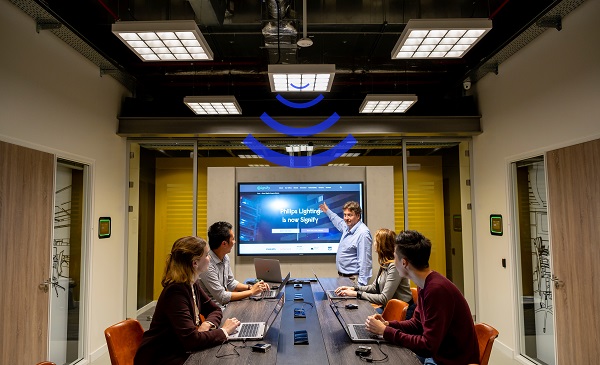Signify is speeding up its LiFi development and implement. The leading lighting company announced the trail of LiFi in Europe, North America and Asia through cooperation with more than 30 customers.
Signify and its customers set up pilot LiFi installations in worldwide cities. In India, Signify works with Incubex, an incubator for product and business solution, to set up a LiFi implemented meeting room where new startups and firms can apply the technology with Signify’s Philips LiFi-enabled luminaires.
In Europe, Signify collaborate with telecoms company Orange, providing LiFi service for its Paris Office. The Dutch lighting company also installed LiFi luminaires for Atea, an iT infrastructure company in the Nordic and Baltic region, in its office in Stravenger, Norway. The LiFi luminaires equipped lobby of its building can demonstrate the technology and offers visitors the connectivity.
In addition, Republic Polytechnic in Singapore will install LiFi in its Smart Devices Lab. It intends to give its students new learning opportunities and broaden their exposure to smart lighting technologies. The polytechnic is the first institute of higher learning in Southeast Asia to adopt LiFi.

(Image: Signify)
LiFi provide secure and stable connectivity with energy efficient LED light. Compared to WiFi, it offers at least 1,000 times the spectrum. The technology is attracting considerable interest as an alternative or complementary technology to WiFi for specific applications and because of the increasing congestion of the radio spectrum. Moreover, LiFi adds an extra layer of security as light cannot pass through solid walls and a line-of-sight to the light is needed to access the network.
“Our initial pilots illustrate the massive potential of this technology,” said Michel Germe, Head of LiFi at Signify. “We’ve received hundreds of enquiries from potential customers from all corners of the world, some of which have unearthed applications we’d never considered in detail, such as communication between robots in manufacturing facilities. As well as the 30 pilot projects, we’ve installed LiFi in 26 of our buildings across the world.”
The pilot projects underscore Signify’s commitment to developing innovations to benefit its customers and its leadership in lighting for the Internet of Things (IoT).





 CN
TW
EN
CN
TW
EN






